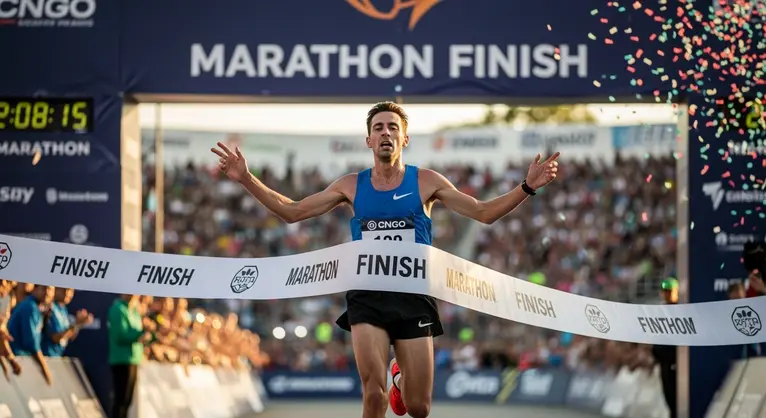Recovery & Injury: A Practical Guide for Fitness Enthusiasts and Athletes
Whether you’re a seasoned competitor, just starting your fitness journey, or somewhere in between, staying healthy and bouncing back from setbacks is vital. Nothing disrupts progress—or motivation—like an injury. Fortunately, with the right strategies, you can minimize risk, recover faster, and return stronger than ever. Let’s dig into the science, tools, and mindset you need to thrive.
Understanding and Preventing the Most Common Sports Injuries
Ever wondered why some athletes seem to avoid injuries while others can’t catch a break? The answer often lies in smart prevention.
- Shoulder Injuries: Common in sports like tennis and swimming, these result from repetitive overhead motion. Prevention starts with dynamic warm-ups, strengthening the rotator cuff, and gradually increasing training loads.
- Elbow Strain: Think about baseball pitchers or weightlifters—repetitive strain can lead to pain. Regular stretching, proper technique, and taking scheduled breaks are key.
- Knee & Hip Problems: Popular among runners and team athletes, injuries here can be devastating. Science shows that neuromuscular training—think agility drills and balance work—can lower lower-body injury risk by up to 36%.
- General Protection: Invest in well-fitting shoes, consider joint supports or taping, and always check your training environment for hazards.
Every athlete, whether amateur or pro, benefits from a structured strength and flexibility program. Think of prevention as insurance: you hope you won’t need it, but you’re glad to have it.
Recovery Essentials: From Rest Days to Gadgets
Got sore muscles or a nagging pain? Recovery isn’t just downtime—it’s where growth happens.
- Rest and Sleep: Your body repairs most effectively while you sleep. Skimping on quality rest can double your recovery time!
- Stretching and Mobility: Regular stretching after sessions keeps muscles flexible and joints healthy. It’s simple, but often skipped.
- Massage and Foam Rolling: These boost circulation and reduce soreness. Massage guns and foam rollers are game-changers, especially after intense sessions.
- Cold Therapy: Ice baths or cold packs help fight inflammation after tough workouts.
- Support Gadgets: Compression gear, insoles, and braces not only aid recovery but can also prevent new injuries.
Start slow when returning from injury; listen to your body. A gradual, individualized plan is always safer than jumping straight back in. For a detailed approach, refer to our injury recovery checklist.
Nutrition for Faster Healing: Fueling Your Comeback
Think of your body as a high-performance engine—it needs the right fuel to repair and perform.
- Stay Hydrated: Dehydration slows muscle repair and saps your energy.
- Protein Power: Lean meats, eggs, legumes, or plant-based alternatives support tissue repair and growth.
- Carbs and Micronutrients: Whole grains provide steady energy, while vitamins and minerals (especially calcium, vitamin D, iron, and zinc) are crucial for bone, muscle, and immune health.
- Smart Supplements: While food should be your first choice, some may benefit from a quality multivitamin or additional protein—especially during intense recovery phases.
Aim for balanced meals, and don’t drastically cut calories when injured. Your body needs extra nutrients to rebuild! For more on bone health, you can check our guide on calcium for bone strength.
The Mental Edge: Staying Motivated During Rehabilitation
It’s natural to feel frustrated or unmotivated during injury. But mental strength is as vital as physical strength.
- Set Realistic Goals: Track small wins, like improved range of motion or increased reps. Every step counts.
- Visualize Success: Imagine returning stronger—many athletes use this strategy to stay focused. Learn more about visualization for healing.
- Stay Social: Engage with teammates, join support groups, or share your progress online.
- Mindfulness & Positive Self-Talk: Techniques like meditation reduce stress and keep you mentally resilient throughout recovery.
Remember, setbacks are setups for comebacks. The mental game often determines who returns better than before.
Bringing It All Together: Your Action Plan for Longevity
Preventing injuries, embracing smart recovery, fueling your body, and maintaining a resilient mindset isn’t just for elite athletes. These are habits anyone can use to stay active and healthy for life.
What small change can you start today? Maybe it’s adding a post-workout stretch, swapping out your running shoes, or setting a mini-goal during recovery. Every action adds up.
Want more expert tips? Connect with the Gympulse Club community—you’ll find support, inspiration, and the tools you need for your best active life.
Stay strong, stay smart, and make every comeback your best yet!

